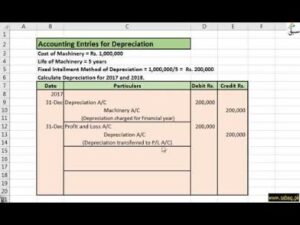How To Do A Bank Reconciliation: Step By Step

If you commonly make deposits into your account, you’ll want to compare your bank account deposit totals to those listed in your general ledger. There are times when the bank may charge a fee for maintaining your account, which will typically be deducted automatically from your account. Therefore, when preparing a bank reconciliation statement you must account for any fees deducted from your account.
To reconcile your bank statement with your cash book, you’ll need to ensure that the cash book is complete and make sure that the current month’s bank statement has also been obtained. Once you complete the bank reconciliation quickbooks accounting solutions statement at the end of the month, you need to print the bank reconciliation report and keep it in your monthly journal entries as a separate document. This document will make auditors aware of the reconciled information at a later date. At times, your customers may directly deposit funds into your business’ bank account, but your business will not notified about this the bank statement is received. When your business issues a check to suppliers or creditors, these amounts are immediately recorded on the credit side of your cash book.
Review: What are bank reconciliations?
A bank reconciliation is used to detect any errors, catch discrepancies between the two, and provide an accurate picture of the company’s cash position that accounts for funds in transit. Taking the time to perform a bank reconciliation can help you manage benefits of good bookkeeping practices your finances and keep accurate records. This relatively straightforward and quick process provides a clear picture of your financial health. Consider reconciling your bank account monthly, whether you set aside a specific day each month or do it as your statements arrive.
financial
- Notice that the bank reconciliation form above still does not balance, even after including the outstanding checks.
- These debits made by the bank directly from your bank account will lead to a difference between balances.
- The more frequently you do a bank reconciliation, the easier it is to catch any errors.
- Some bank services, including expedited payments, bank drafts, and in some cases paper bank statements, may come with additional bank fees.
- Reconciling bank statements with cash book balances helps your business know the underlying causes of these balance differences.
The balance recorded in your books (again, the cash account) and the balance in your bank account will rarely ever be exactly the same, even if you keep meticulous books. Hopefully you never lose any sleep worrying about fraud—but reconciling bank statements is one way you can make sure it isn’t happening. The deposit could have been received after the cutoff date for the monthly statement release.

Step two: Adjusting your balances
When you compare the balance of your cash book with the balance showcased by your bank passbook, there is often a difference. One of the primary reasons this happens is due to the time delay in recording the transactions of either payments or receipts. Likewise, ‘credit balance as per cash book’ is the same as ‘debit balance as per passbook’ means the withdrawals made by a company from annualized income installment method a bank account exceed deposits made. These outstanding deposits must be deducted from the balance, as per the cash book, in the bank reconciliation statement. It’s important to perform a bank reconciliation periodically to identify fraudulent activities or bookkeeping and accounting errors. This way, you can ensure your business is in solid standing and never be caught off-guard.
These checks are in transit, so they haven’t yet been deposited into the company’s bank account. He also finds $500 of bank service fees that hadn’t been included in his financial statement. Once you’ve identified all the items that align between the two records, it’s time to account for any discrepancies. These may include deposits in transit, outstanding checks, bank fees, or miscalculations by the bank or the internal accounting team. As with deposits, take time to compare your personal records to the bank statement to ensure that every withdrawal, big or small, is accounted for on both records.
It is important to note that it takes a few days for the bank to clear the checks. This is especially common in cases where the check is deposited at a different bank branch than the one at which your account is maintained, which can lead to the difference between the balances. This way, the number of items that can cause the difference between the passbook and the cash book balance is reduced. And as a result, it gets easier to ascertain the correct balance in the balance sheet. The debit balance as per the cash book refers to the deposits held in the bank, and is the credit balance as per the passbook.
This is where your accounting software can help you reconcile and keep track of outstanding checks and deposits. Most reconciliation modules allow you to check off outstanding checks and deposits listed on the bank statement. To reconcile means to “make one view or belief compatible with another.” In accounting, that means making your account balances equal to one another. More specifically, a bank reconciliation means balancing your bank statements with your bookkeeping. Consider an accounting team at a mid-sized company that needs to perform bank reconciliation on a monthly basis. This task is essential to ensure that their financial records are accurate and up-to-date.

Commenti recenti